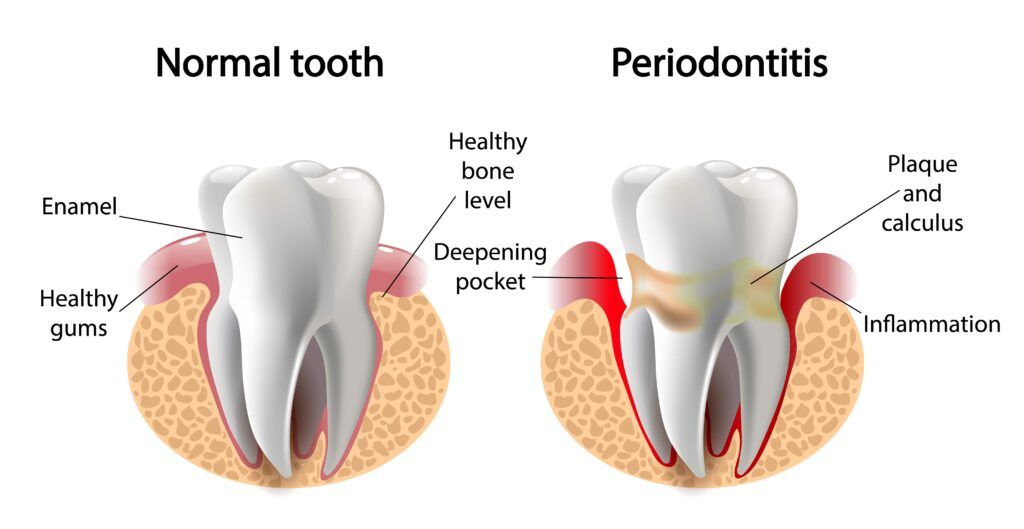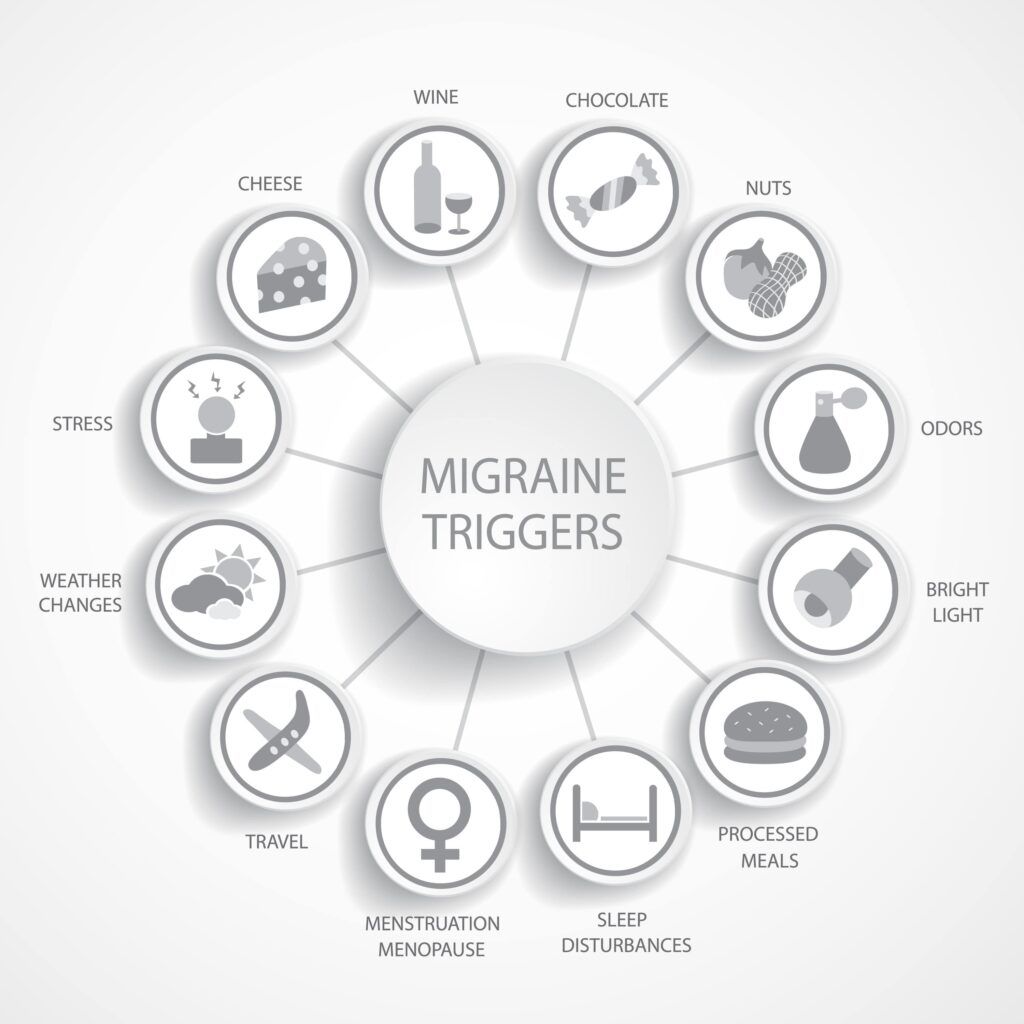Migraine headaches are a debilitating condition that affects millions of people worldwide. Characterized by intense and often throbbing pain, migraines can be triggered by various factors, including stress, certain foods, hormonal changes, and environmental stimuli. However, recent research has unearthed a surprising potential trigger for migraines: periodontal disease. This connection not only underscores the complexity of migraine triggers but also highlights the importance of oral health in overall well-being.
Understanding Periodontal Disease
Periodontal disease, commonly referred to as gum disease, is a set of inflammatory conditions affecting the tissues surrounding the teeth. This disease is extremely common and affects 2 out of every 5 adults. It progresses in stages, starting from gingivitis, which is mild inflammation of the gums, to more severe forms known as periodontitis, where there is significant damage to the soft tissue and bone that support the teeth.

The primary cause of periodontal disease is the accumulation of bacterial plaque on the teeth and gums. If plaque is not adequately removed through regular brushing and flossing, it can harden into tartar, which further irritates the gum tissues, leading to inflammation. Over time, this inflammation can cause the gums to pull away from the teeth, forming pockets that harbor more bacteria, leading to further damage.
Symptoms of periodontal disease include swollen, red, or tender gums, bleeding during brushing or flossing, receding gums, persistent bad breath, loose teeth, and changes in the way teeth fit together when biting. If left untreated, periodontal disease can lead to tooth loss and has been associated with increased risk of systemic conditions such as cardiovascular disease, diabetes, and complications during pregnancy.
Treatment of periodontal disease depends on its severity and may range from non-surgical methods like scaling and root planing (deep cleaning) to surgical interventions in more advanced cases. Maintaining good oral hygiene practices, including regular brushing, flossing, and dental check-ups, is crucial in preventing the onset and progression of periodontal disease.
Understanding Migraines
Migraines are a type of headache characterized by intense, often debilitating pain, typically affecting one side of the head. They are part of a neurological condition and can last for hours to days. The pain is usually described as throbbing or pulsing and can be accompanied by other symptoms such as sensitivity to light, sound, or smells; nausea; vomiting; and visual disturbances known as aura.

The exact cause of migraines is still not fully understood, but they are believed to result from abnormal brain activity affecting nerve signals, chemicals, and blood vessels in the brain. Migraines can be triggered by various factors, including stress, certain foods, hormonal changes (such as those related to menstruation), weather changes, sleep disturbances, and certain medications.
Migraines are diagnosed based on clinical history, symptom description, and by ruling out other causes of headache. While there is no cure for migraines, treatments are available that help manage the symptoms and reduce the frequency of attacks. These treatments include over-the-counter or prescription medications, lifestyle changes to avoid known triggers, and preventive measures such as stress management techniques and regular exercise.
Migraines can significantly impact the quality of life of individuals who suffer from them, but with proper management, many people can reduce their symptoms and the impact on their daily activities.
The Periodontal Disease-Migraine Connection
Migraines are complex and not all triggers or causes are known, but recent studies suggest a possible link between periodontal disease and migraine, potentially making periodontal disease a comorbidity or risk factor. Dr. Mei-Hsuan Lee from National Yang Ming Chiao Tung University led a study in Taiwan to explore the connection between periodontal disease and migraines, inspired by similar research from Spain.
The study utilized data from the Taiwan Biobank, involving 66,109 individuals aged 30-70 years, and found a higher prevalence of periodontal disease among those with migraines compared to those without. The study inclued 4,618 people with a pre-existing diagnosis of migraine, as well as 61,491 people who made up a non-migraine control group.
It was found that 94% (4,324/4,618) of the people with an existing migraine diagnosis also had periodontal disease. In the control group, however, only 91% (56,036/61,491) of people without migraine had periodontal disease. Therefore, the results indicate that there could be a possible relationship between migraines and periodontal disease.
However, it is important to note two things. First, the study’s limitations include its focus on a specific population (Taiwanese). Second, is that this study was designed only to identify if there was a connection between the two, and not to determine how this connection works. The results of his study show the need for future research to explore the biological mechanisms behind the potential link between periodontal disease and migraines.
Conclusion
The emerging evidence of a connection between periodontal disease and migraines adds to the growing understanding of migraines as a complex neurological condition with multiple potential triggers. It highlights the importance of considering oral health in the context of neurological disorders and suggests that maintaining good periodontal health may be a key factor in managing migraines. As research continues to unravel the intricate links between different body systems, the hope is that new strategies for preventing and treating migraines will emerge, offering relief to the millions affected by this condition.

Dr. Kashouty, a diplomate of the American Board of Psychiatry and Neurology (ABPN), practices general neurology with fellowship trained specialization in clinical neurophysiology. Dr. Kashouty finds the form and function of the nerves and muscles the most interesting part of neurology, which is what led him to specialize in neurophysiology with more emphasis on neuromuscular conditions. He treats all neurological diseases, but his main focus is to treat and manage headaches, movement disorders and neuromuscular diseases.




